If you are thinking about raising chickens one of the first things that you will need to do is to decide what chicken breeds will be best for your flock. When we first started looking at chickens, we were SHOCKED at how many different types of chickens there are!
Whether you will be hatching your own chicks, buying and raising day old chicks or buying started chickens you will need to know why you are getting chickens in the first place. Knowing your reason why will help you to narrow down which chickens are best for you.
We started with day old chicks and graduated pretty quickly to hatching out own with a small starter incubator and eventually a full sized cabinet.
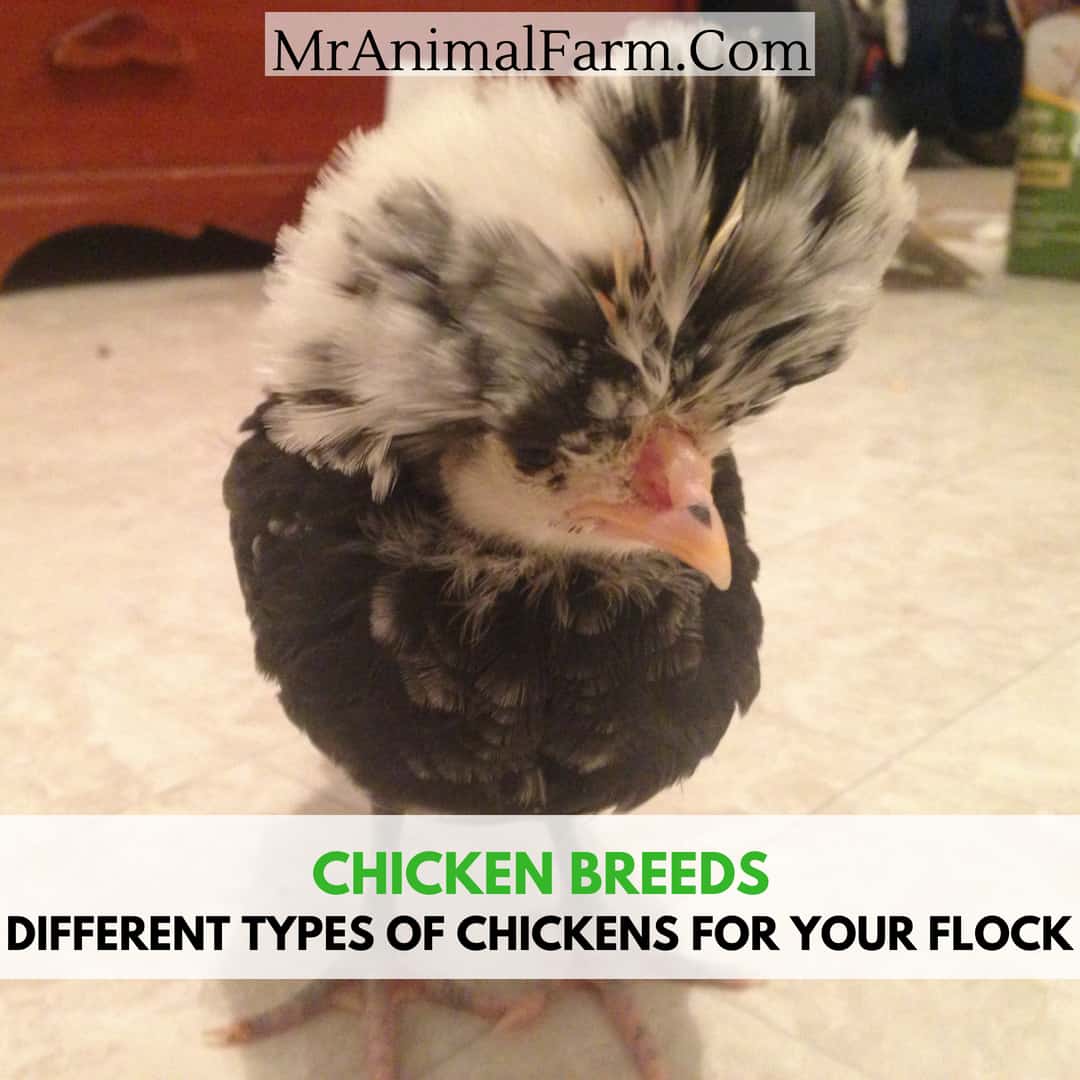
If we are being honest, when we first got chickens we didn't really look at the different types of chickens and what their uses were. We basically looked at the options available and thought - ooh that one is cute, and that one has a cool pattern, and I love that one's cool feathers!
Picking out chicken breeds based just on what they look like provided us with a fun to look at flock.
However, if you are looking to have chickens that are more than just "fun to look at", then you probably want to think a little harder about which birds will meet your needs best.
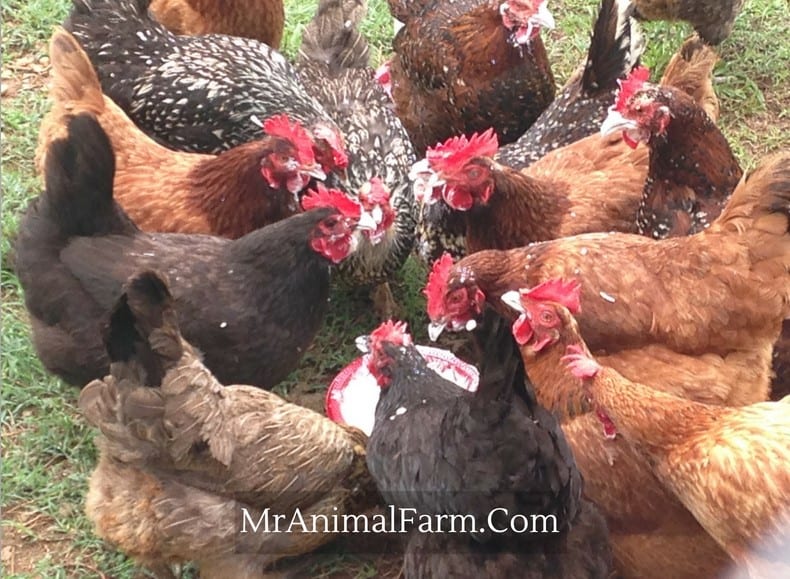
Chicken breeds from A to Z
Here is a very large list of chicken breeds (and there are still hundreds more). We will start with an A to Z list with a short need description. Then, in the second half of this article we will look at what breeds in categories like the best for different purposes, egg colors, features, and more!
Without further ado, let's get to the list!
Altsteirer
Altsterier chickens are originally from Austria and Slovenia, specifically in the Styria region of these countries. This breed is a great dual purpose breed as it has a decent sized body and also lays a large number of eggs. Their eggs are white.
Altsteriers come in a variety of different colors including black breasted red, cuckoo, partridge and white. It is considered to be a rare breed.
Amberlink
Amberlinks which are also known as Dekalb Amberlinks are a hybrid chicken. They were bred by Isa Hendrix genetics in an effort to make a chicken which can lay many eggs, quickly. They were developed in the 1970's.
This breed of chicken can lay around 270 Medium to Large sized brown eggs every year. They tend to be friendly and are both cold and heat hardy meaning that they will lay well year round.
In terms of their appearance, the males tend to be 5 - 6lbs while females are slightly smaller at 4 - 5 lbs. And both males and females are red and white. However, males are mostly red with a little white and females are mostly white with just a red tint.
Ameraucana
First things first, they are NOT AMERICANAS!
Now that we have that settled, let's talk about the Ameraucana chicken. They are a rare breed often confused with an Easter Egger and/or Araucana. Typically because they lay blue eggs; similar to those other breeds. They are used for egg production, usually laying 150-200 medium blue eggs a year, in various shades of blue.
The physical differences you will notice is that Ameraucanas will ALWAYS have both muffs & beards. They are a moderately sized bird. An Ameraucana has an average weight of 6 to 7 lbs. This breed is sweet and has a fun personality. They prefer to be in colder regions and will usually lay consistently throughout the winter.
Ameraucanas come in a wide variety of colors and patterns. Those recognized by the APA are Black, Blue, Blue Wheaten, Brown Red, Buff, Silver, Wheaten, and White. They also have a small pea comb and 4 toes on their feet.
Ancona
The Ancona chicken is a pretty production bird. It's appearance has a mottled, or spotted/speckled, pattern of black & white feathering. Both the single and rose combs recognized by APA, as well. You will also find 4 toes on each foot.
This rare Mediterranean breed is mostly used for egg production, laying 5 large white eggs a week or 260 a year. Despite their high production value, they are also large enough to be meat birds, if you desire once they no longer lay. They will typically grow to be about 6 or 7 lbs.
Anconas are not particularly friendly. However, they are very productive, cold hardy, and do not go broody often.
Andalusian
Originally from Andalucia, Spain, the Andalusian is a beautiful and rare Mediterranean chicken breed. They generally sport a lacing pattern on their feathers and you will find them in black, blue, and white, however, the APA only recognizes blue.
They are not a particularly small bird, weighing around 6 or 7 lbs, as an adult. They have a bright red single comb with matching wattles, as well as, 4 toes on each foot.
Andalusians do not usually like the cold but are pretty heat hardy. They are an active breed and not very docile. You can expect to get around 3 large white eggs per week or 150-200 a year. Finally, if you want a breed that does not go broody often, add this one to your list of options.
Appenzeller Barthühner
The Appenzeller Barthühner is a rare breed of chicken from the Swiss Alps. Being from such a cold climate has made them a very cold hardy bird. They were specifically bred to be that way as well as crossed with breeds to enhance their egg laying abilities. You can typically expect them to lay around 2 or 3 eggs a week.
This breed was also crossed with Italian chickens to get their rose comb and bearded appearance. Over time they have become exceptionally rare but in the mid 1980s, a conservation project was started to rejuvenate the breed.
Appenzeller Spitzhauben
The Appenzeller Spitzhauben is a remarkable looking chicken. It has an instantly recognizable forward pointed crest and v-shaped comb. Perhaps it's physical flair is why it is the national chicken of Switzerland. In addition to it's crest and comb, it also sports a wide array of impressive feathering; Barthuhner, Black Spangled, Blue Spangled, Gold, Gold Spangled, Silver Spangled.
The Appenzeller Spitzhauben, likely due to it's Swiss origins, is well suited for mountain life. They are skilled climbers and will often choose the branches of a tree as their roosting place. These chickens are very free-spirited and alert to their surroundings. They do not take to confinement very well. Only consider this breed if you have the room for them to freerange most of the time, as they are active foragers.
Appenzeller Spitzhaubens are usually only 4 to 5 lbs. Despite their small size, they lay a respectable amount of decently sized eggs. You can expect around 3 medium white eggs per week or 150-200 a year. They are also very adaptable to most climates. This breed is both cold and heat hardy.
Araucana
Not to be confused with Ameraucanas or Easter Eggers, this rumpless (meaning no tail feathers), chicken is a very good layer. Which is fortunate because that is it's intended purpose on a farm. They will lay around 150 to 200 medium blue eggs a year.
They are recognizable by their unique, sometimes uneven, tufts of feathers on their cheeks. While this is an adorable trait, unfortunately, the gene related to tufts can cause Araucana chicks to die before they can hatch.
Though you may often see Araucanas listed on hatchery sales, it is unlikely they are selling the real deal. This breed is very rare and generally only available through Araucana breeders.
That's not to say those hatcheries are lying, but often times, even experienced chicken folk, cannot tell the difference between Araucanas, Ameraucanas, and Easter Eggers.
A true Aracauana is recognized by the APA to have Black, Black Red, Golden Duckwing, Silver Duckwing, and White feathering, 4 toes on each foot, and a pea comb. They are not a super friendly or docile breed. However, they are not difficult to catch if you need them because they do tend to go broody from time to time.
Asil (or Aseel)
The Asil, or Aseel, is an old Indian (the country, not Indigenous folk) breed. Initially bred as fighters, this rare breed is now an ornamental/show bird. Which is good because it is one of the worst layers in all chickendom. They tend to be broody and just sit on the 1 medium cream color egg they lay each week.
Asils are impressively colored. They are recognized in Black Breasted Red, Dark, Spangled, White, and Wheaten. They have a pea comb and 4 toes on each foot. You can raise them in cooler climates as they don't really like the heat. Despite their violent origins, they are surprisingly sweet, docile, and very smart.
Austra White
The Austra White is a hybrid chicken. It is the result of crossing a Black Australorp rooster with a White Leghorn hen. They are mostly white but splashed with small black spots or speckles. This breed sports a single comb, wattles, and 4 toes on each foot.
This hybrid breed was intended to be a production bird and, let me tell you, they succeeded. Do not be at all surprised if you end up with 4 to 6 light brown (very) large eggs a week or 200 to 300+ eggs a year! They are also a moderately sized bird with the hens weighing around 5 lbs and the roosters only 6.5 lbs. They can live anywhere due to them being hardy in any climate; hot or cold. Austra Whites also make great pets due to their docile and laid back, friendly nature.
Australorp
The Australorp is very similar to the Orpington. In fact, the Australorp is the Australian version of an Orpington. They were bred to be large and productive dual purpose chickens. They will typically grow to be 7 to 8 lbs. Australorps are also excellent layers; Often laying 5 large brown eggs week and around 250+ year.
They are beautiful birds. At first glance they look completely black. But as you focus, and the sunlight hits them, you will see shimmering hints of green and purple. Australorps are friendly and docile. They also do very well in colder climates.
Ayam Cemani
The Ayam Cemani is perhaps the most unique chicken you will ever see. It is completely jet black. We mean COMPLETELY! Feathers, skin, eyes, feet, beak, comb, even their internal organs are black! This is due to a rare genetic condition called fibromelanosis.
Ayam Cemanis are a rare Indonesian chicken breed. These days, you are likely to find them displayed as ornamental birds, if you see them at all. Despite their ominous look, they are surprisingly friendly and gentle.
Again, the Ayam Cemani is almost exclusively an ornamental breed. They will only lay an average of 2 small cream color eggs a week. Worse yet, they will lay in batches, a few weeks at a time, then long periods of nothing. They are not a broody breed but that is likely to them not laying very often.
Barbezieux
The Barbezieux hen can lay somewhere between 160 and 200 large eggs a year. On top of that, they are a dual purpose bird, meaning they can also be used for meat; growing to 8 pounds for a hen and the rooster at 10 pounds.
Barbezieuxs are wonderful backyard breeds, as well. They are just fine being left alone to free-range but are also friendly enough to be picked up and handled. This breed is both heat and cold hardy making them suitable for just about any environment.
Barnevelder
Barnevelder chickens originally come from the town of Barneveld in the Netherlands. Their unique lacing make them some of the most beautiful birds you can buy. The 200 chocolate colored eggs they lay a year stand out from many other breeds because of how deep and rich the color is.
This Dutch breed is a cross between many chickens across Asia, known as Shanghai chickens. However, the prevailing crosses are the Croad Langshan and a smaller chicken resulting in a bantam sized Barnevelder, as well.
Bresse
Bresse chickens are a unique meat bird from France. Their exact history is not known, but they are known for the distinct taste of their meat. To be a true Bresse chicken, they must be from the Bresse region of Eastern France.
While the most common color being white, they do come in other colors: black, blue and grey. They tend to be around 5 - 6 pounds, fairly healthy and great foragers.
Deathlayer
The Deathlayer Chicken is originally from Germany; where they are known as Westfälische Totleger. Their name, despite it's ominous connotations, has nothing to do with anything deadly, at all. It is merely commenting on their incredible egg laying abilities. Deathlayers can lay up to 200 eggs a year, which is not unheard of in other breeds.
The difference? Their name is meant to imply that they will lay up to the day they die. Whether that's true or not is unknown. They will, however, lay much longer than the rest of your flock. Being an active breed, they're always free ranging for more food; possibly because of the energy to produce eggs for so long. They are also a hardy bird; thriving in both hot and colder climates.
Polish chicken
If you have never seen a Polish chicken before, do yourself a favor and click the link on this section. We'll wait...
Back?
Adorable. Right?
The Polish chicken, with it's magnificent crest and spunky personality will easily capture the heart of anyone wanting to raise them. They are very small and will only lay around 2 or 3 eggs a week for you. Since they are poor layers and too small to eat, what are they good for (need to click the link again)?
The Polish Chicken has a permanent home in the chicken show world as a very popular ornamental breed. Black and white is just one of the multiple colors in which you can find them.
Sussex
If you are looking for a reliable layer, the Sussex Chicken is one of the best around. Originating in Sussex, England , they are one of the oldest breeds in existence. Through time and breeding, they have became extremely great production birds. You will get several large, light brown eggs a week. On top of that, they are also an excellent protein source for those who like to raise dual purpose chickens. They are a cold hardy breed but are also comfortable in warmer regions, as well.
Swedish Flower Hen
Swedish Flower Hens are a landrace breed that originated in Sweden. They are also known as Skånsk Blommehöna. They are a calm, intelligent breed that tends to be very easy to care for.
They lay around 200 large to extra large cream or light brown eggs per year. They are a cold hardy breed, so they tend to lay well through the winter.
They are a really beautiful looking bird with a flower like pattern on their feathers (hence their name). Some of these birds have a crest and others do not.
Welsummer
The Welsummer is another Dutch breed from Welsum in the Netherlands. The came about when Dutch farmers in the early 1900s starting crossing many of the local chicken breeds together. This mish mash of chicken genetics eventually became the Welsummer chicken.
Welsummers will grow to be around 7 lbs or so. But they are most well known for their beautiful, dark, chocolate brown eggs. Their eggs will often have speckles all over them too; they almost look like candy. You can expect to get around 150 to 200 of these eggs a year, too!
Wyandotte
The Silver Laced Wyandotte is just one pattern and color of many in the Wyandotte family. You can also find them in gold laced, columbian, blue, and black, just to name a few. Each color and pattern is just as stunning and impressive as the last. They are so impressive that the APA recognized them way back in 1883.
Wyandottes will lay around 250 large brown eggs per year. They are also large enough to be dual purpose; meaning they can be meat birds.
Yokohama
The Yokohama chicken is a very small, heat hardy, chicken from Japan. Unlike many other breeds, the Yokohama doesn't mind captivity and is perfectly happy being cooped up all day with fresh water and food.
You are not likely to find this breed at your local farm store or hatchery. They are more of a rare or unique chicken that is well suited for the chicken show life.
Need some help keeping your chickens health and care taken care of? Check out the Organized Chicken Keeper for an easy to follow system.
Chicken breeds and their many uses
There are several hundred different types of chickens. So, it might seem a little daunting knowing that there are so many different options to choose from! Size, egg, meat, colors, pets; there's a breed for every purpose and some breeds can pull double duty and serve more than one purpose.
The first thing you can do is decide on the purpose of your flock. This will help to narrow down the different breeds.
Large fowl Vs Bantams
Before we talk about specific breeds, it's important to know chicken breeds come in two main sizes: standard or large fowl and bantam chickens.
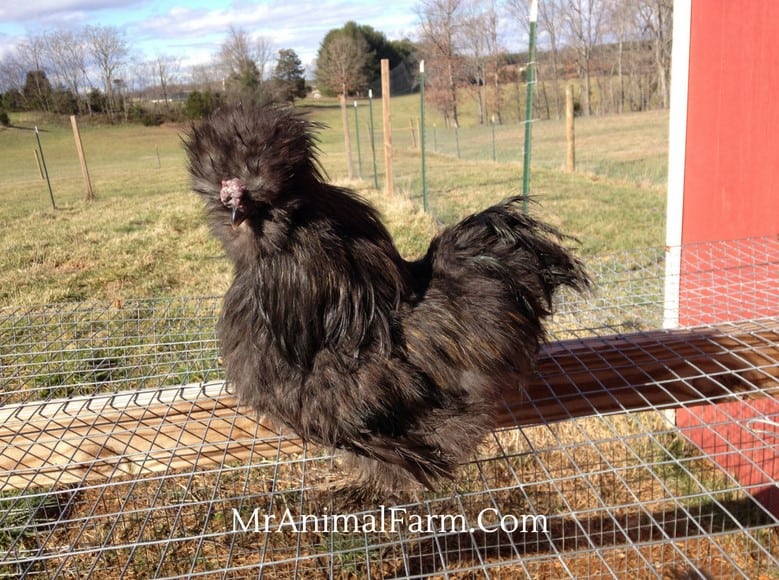
Bantams are simply smaller than average sized chickens. You could consider them mini chickens. Most breeds come in both large and Bantam sizes. But some, like Silkies and Seramas, are only Bantam sized. Cochins and Easter Eggers are types of chickens that come in both bantam and large fowl sizes.
Large fowl chickens are chickens that are your standard size. Within large fowl, some breeds are of course larger than others. Generally, you can think of large fowl as large, medium or small.
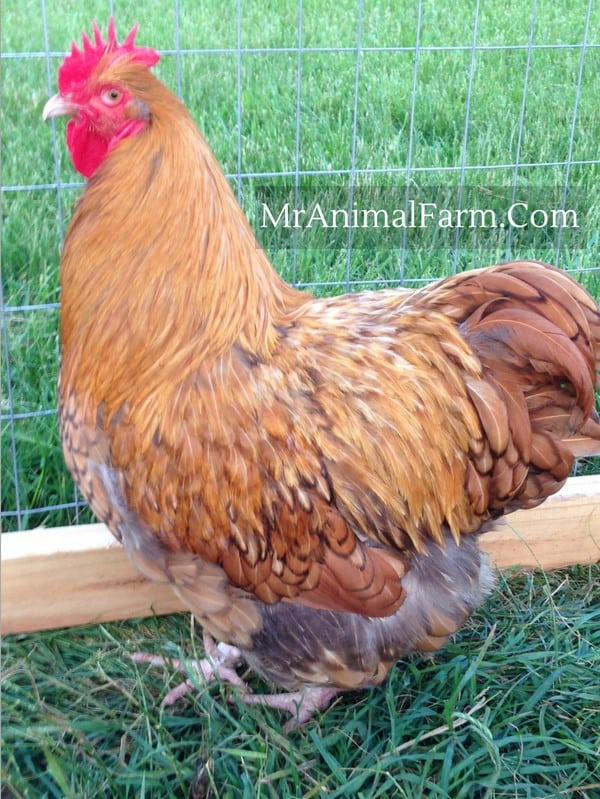
In large fowl, the largest chicken breed is often noted as the Jersey Giant. Other large fowl are the Brahma, Cochin and English Orpington. The largest chickens listed here are usually a minimum of 8 pounds, but some have been known to get closer to 15 to 20 pounds!
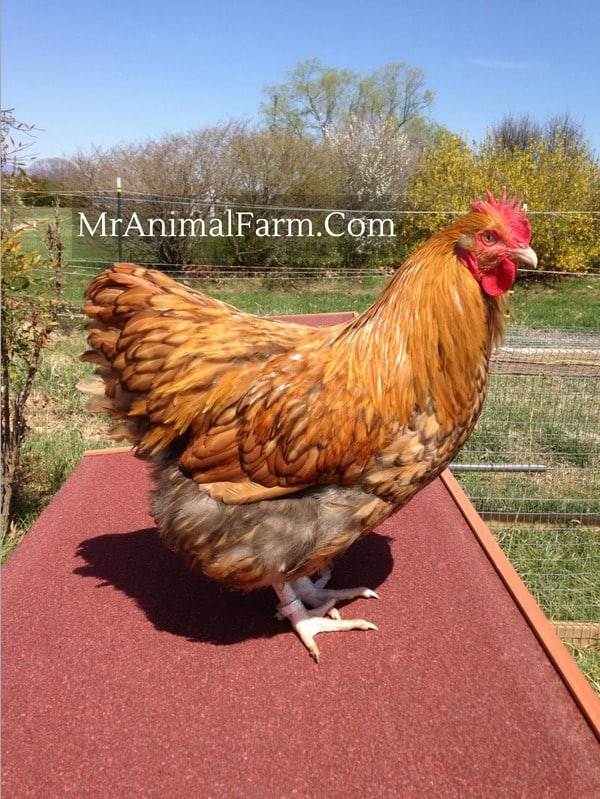
Most large fowl, however, are a little smaller and run more in the 4 to 8 pound range. Some other common large fowl breeds are: Speckled Sussex, Barred Rock, Rhode Island Red and Easter Egger.
Purpose is the other deciding factor when looking at different types of chickens.
Generally, chickens can be divided into 4 different purposes - or uses.
Eggs
Not all chicken breeds were created equally when it comes to laying eggs. You might think when you are just getting started with chickens that all chickens lay eggs, therefore, it shouldn't really matter which ones you get.
That is definitely NOT the case though! Some will lay 5 - 7 times a week (like Rhode Island Reds, Black Australorps and Leghorns). Others will lay more like 3 - 5 times a week.
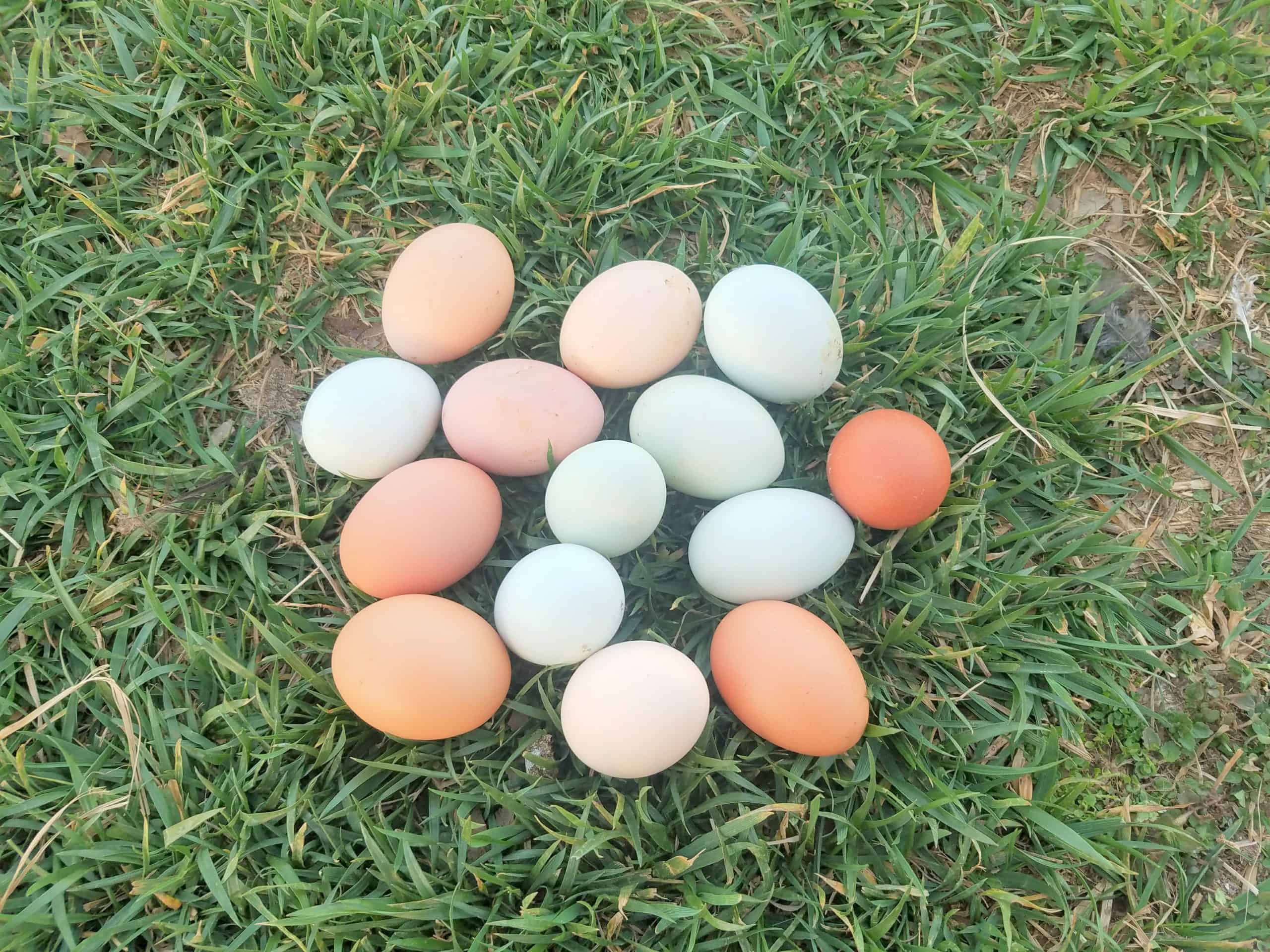
Weather can also affect how well a chicken breed lays eggs. Some types of chickens are made to lay well year round. Others are cold hardy and some are heat hardy.
Additionally, not all eggs themselves were created equally. Some chicken breeds lay smaller eggs (like silkies) while others lay large eggs (like Orpingtons).
So, as you can see, if you are looking to get chickens specifically just for eggs, you will probably want to choose the chicken breeds that lay the largest eggs most often.
In addition to the amount of eggs a chicken lays. Certain chickens lay different colored eggs! There are chickens that lay white eggs, chickens that lay brown eggs, chickens that lay green eggs, and even chickens that lay blue eggs!
Meat
If you are getting chickens as a way to raise your own meat, then it will be important to get chicken breeds that are well suited for that purpose. While it is true that all types of chickens will generate some meat if you raise and butcher them, they may not all be the best for that purpose.
If you get smaller breeds, slow growing breeds or less meaty birds you may well be pretty disappointed after you spend the time and money to raise them and butcher them.
Therefore, if you will be raising chickens for meat, you will want to get chicken breeds that are well suited for that purpose. Most chicken breeds used for meat are heavy, big birds that mature and grow fast.
If you have heavy, fast maturing birds then you will get the most meat in the shortest time which is a big bonus.
Some common chicken breeds used for meat are Cornish or Broilers. Be prepared, most meat chicken breeds are big, ugly and don't live much over their butchering age since they have been bred specifically to grow super big in a short timeframe.
Dual Purpose Chickens
If you want chickens that will meet the needs for generating both meat and eggs, you probably want to look at dual purpose chicken breeds. These are types of chickens that will produce decently for both meat and eggs.
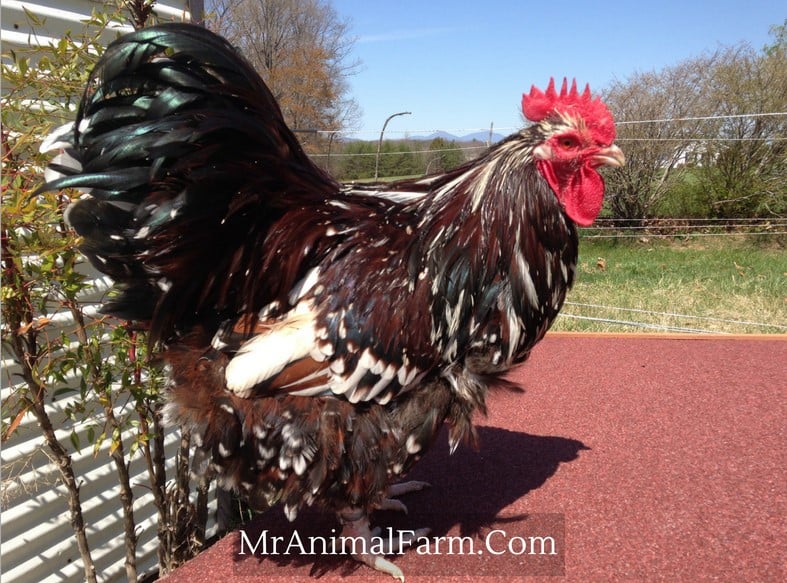
You may not get THE BEST egg layer or THE BEST meat bird by getting chicken breeds that do both things well. However, there are several chicken breeds that will suit both needs without disappointment.
Dual purpose chicken breeds are ones that will lay decently over time, but also get heavy enough and mature fast enough that you can butcher them for meat.
Often times, people will raise dual purpose chicken breeds and they will keep the hens (females) for eggs. They will then butcher the roosters (males) when they are old enough for meat.
Fun
The fourth bucket that you can divide chicken breeds into is for fun! Now, having chickens for fun may mean a lot of things. It could mean you want friendly chickens for pets, fancy chickens to show or just chickens that you think look cool for your yard, like Frizzle chickens.
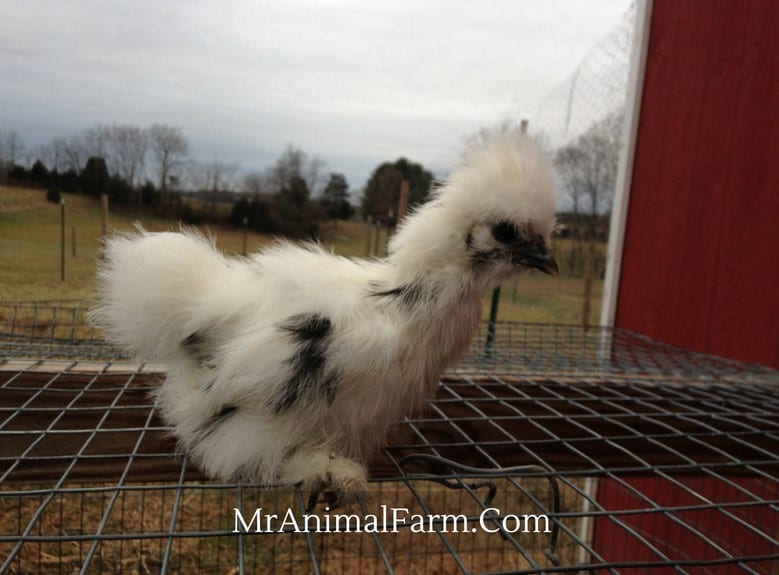
Of course, there are some types of chickens that are great egg layers and friendly so they can be wonderful pets too. But there are many chickens that their main selling point, or best characteristic is that they are friendly or easy to handle making them great for pets. Silkies are one super friendly chicken breed that makes a great pet.
Another fun reason some people keep chickens is for show. People will show their chickens just like you show dogs. Most any APA accepted breed can be used for show. They, of course, all have their specific breed and color standards.
And then, there are chickens that just look cool. Personally, I think a lot of the crested breeds like Polish and Sultans are some of the coolest looking chickens.
Need some help keeping your chickens health and care taken care of? Check out the Organized Chicken Keeper for an easy to follow system.
Rare Chicken Breeds
Usually people will get rare breeds if they are looking to help conserve a certain breed that they really like. Rare Chicken breeds are also good choices if you are looking to make money raising chickens.
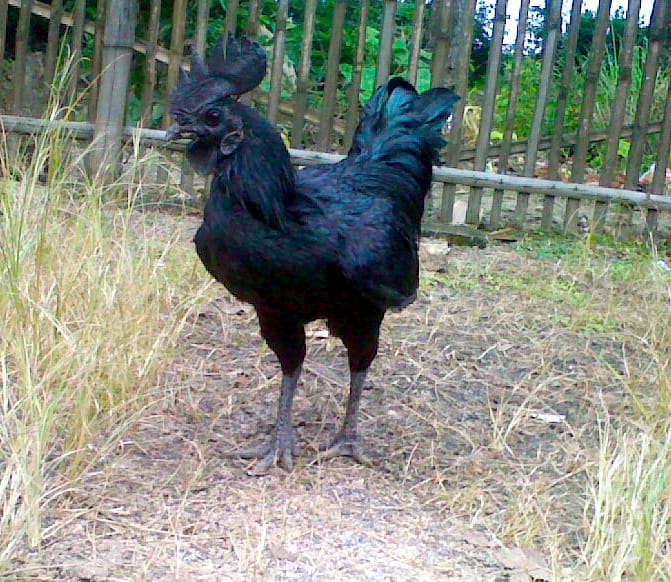
Having a rare chicken breed means not as many other people will also have that breed. Typically, this will make it easier for you to market and sell the chickens.
A few rare chicken breeds are: Ayam Cemani (don't be shocked at their HIGH price tag!), Sumatra and White Breese.
So, how will you decide which of these chicken breeds is the best for you?
Now that you have an idea of just how many different types of chickens that there are to choose from, you might be feeling overwhelmed at all of the choices! The best way to decide which chicken breeds are right for you is to decide WHY you are getting chickens. That will narrow the options down.
After you know why, then you can start looking at the specific chicken breeds that match up to your purpose.
Do you have a favorite chicken breed? Let us know which one below!
If you need more help with taking care of your chickens, check out The Organized Chicken Keeper for a complete system for managing their health through keeping their supplies stocked and coop clean.
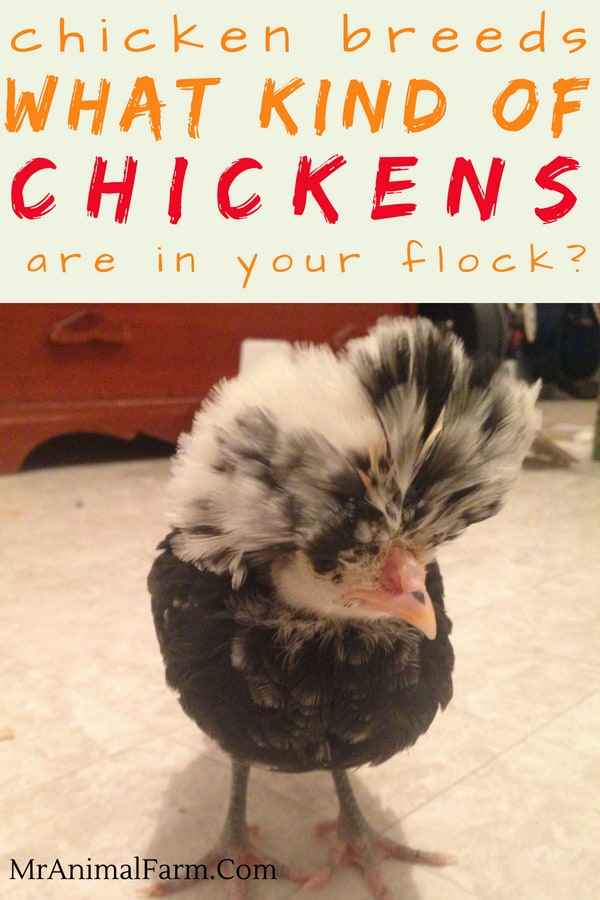
For more on raising chickens, check these out:
[pt_view id="3d0b212jvx"]

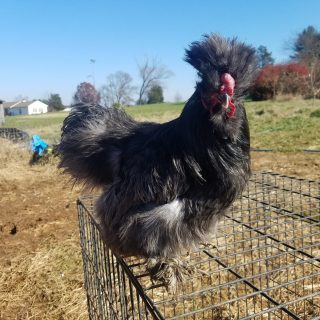
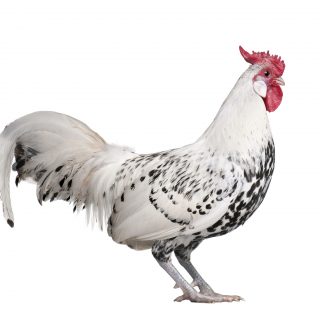
Rural Gardener says
I posted earlier and didn’t click the notification of responses button. What is your opinion on the best dual purpose chicken breeds for central Alabama? Space in the coop and yard with a wire top, hawks and owls, is not a problem!
I’m thinking an 8x16 coop and the fenced yard probably 16x 35. Your thoughts please.
MrAnimal Farm says
Most of the dual purpose breeds would suit your needs. I would focus on ones which are heat tolerant since you are in Alabama. Perhaps Sussex and Rhode Island Reds would be two of my top suggestions.